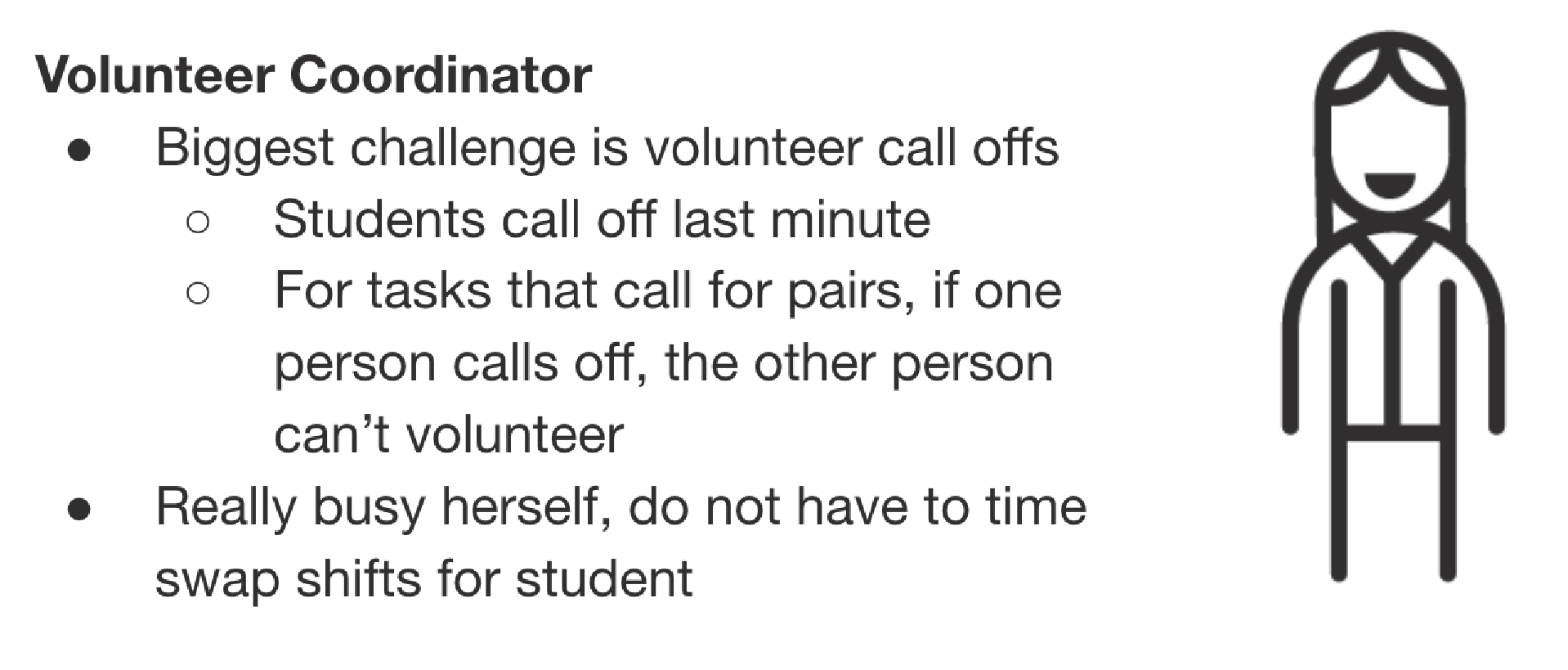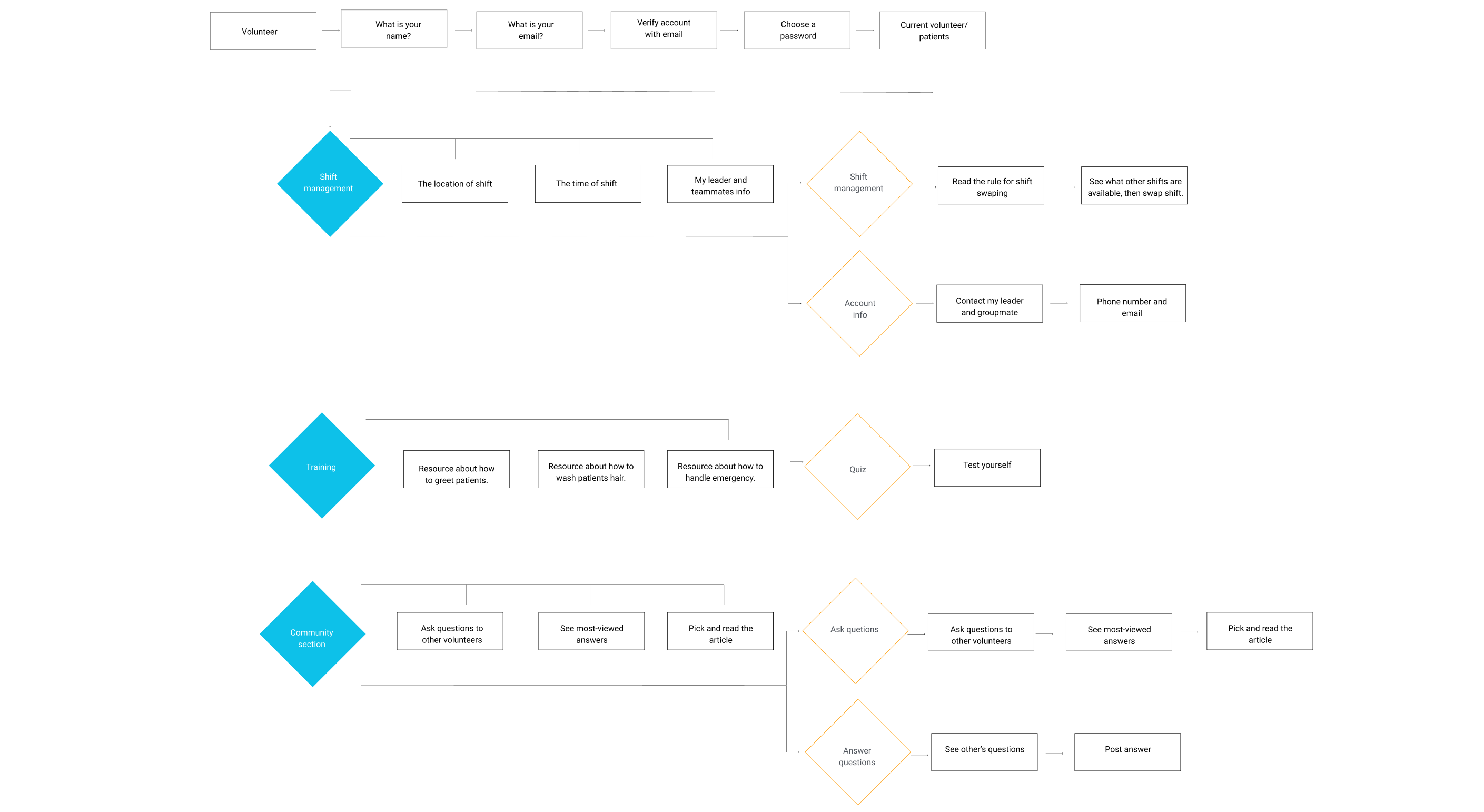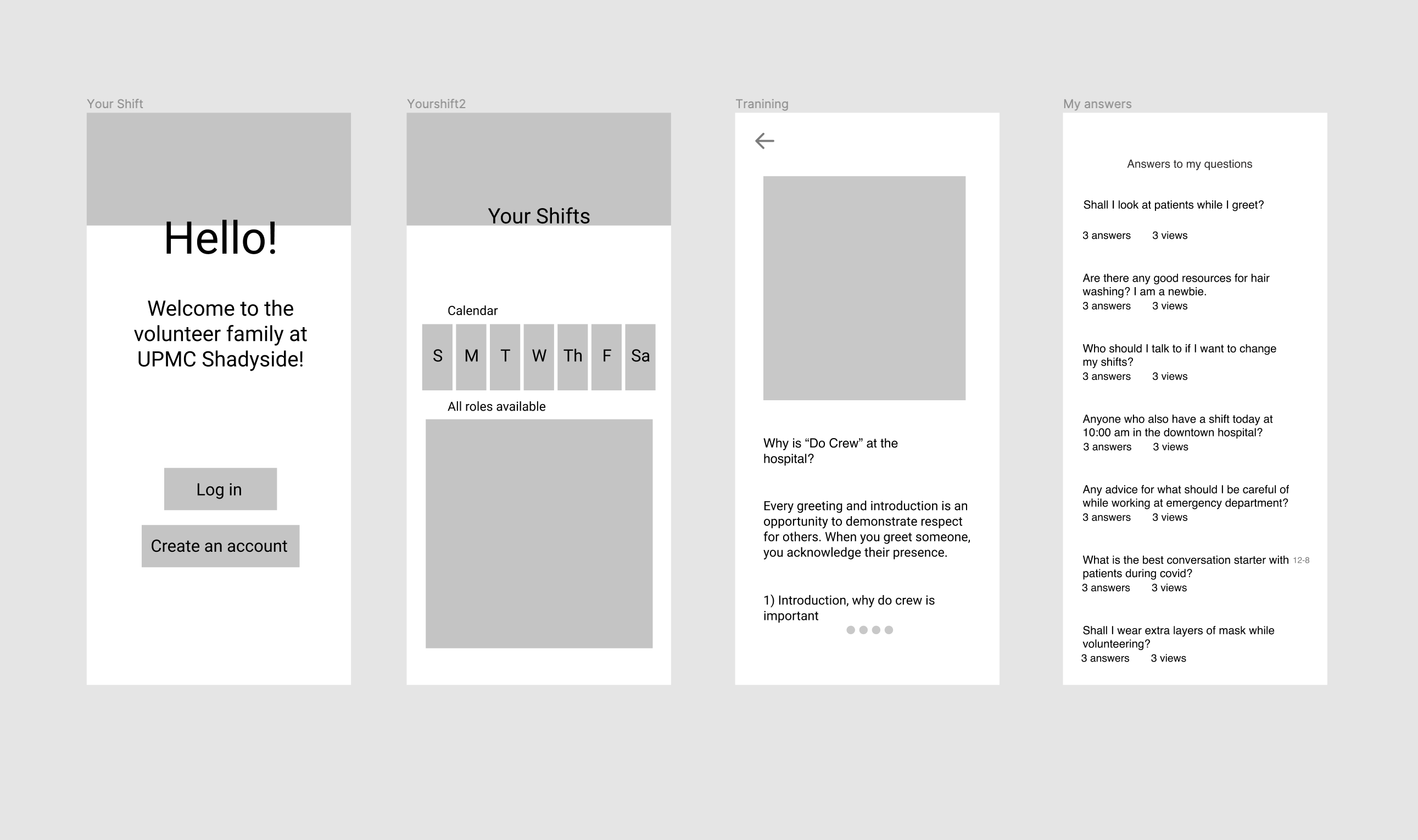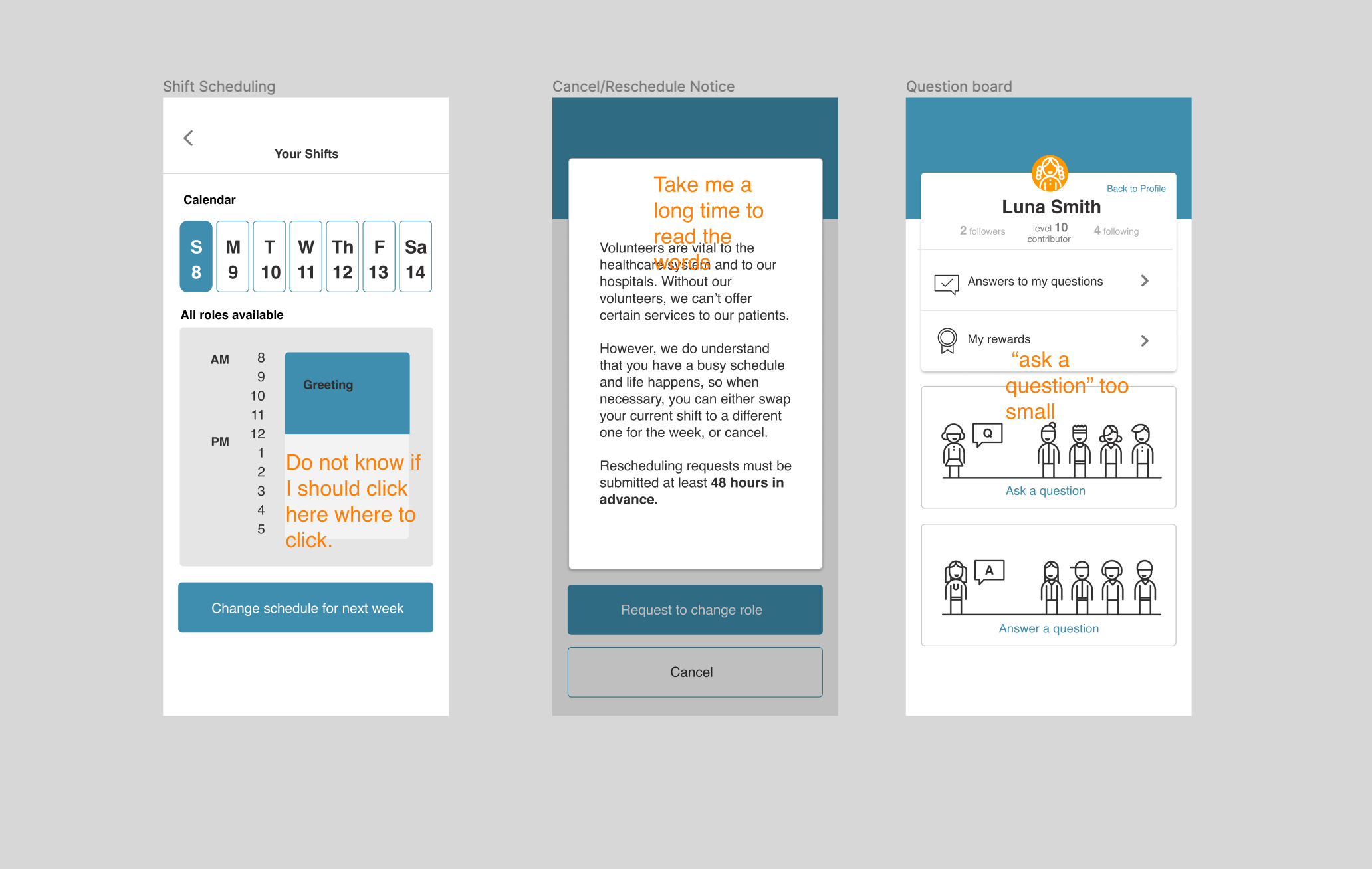

VEER is an app that helps UPMC (University of Pittsburgh Medical Center) to recruit more volunteers. It enables volunteers to manage shifts, communicate with each other, and learn how to do their tasks-all within the app itself. The design aims to build upon the current volunteer experience and encourage more people, especially college students, to get more involved.
November 1st - December 1st 2020
Figma, AI, AE, Miro
Julia Nishizaki
1. Enable volunteers to manage shifts.
2. Provide training resources for volunteers.
3. Encourage volunteers to ask and answer questions related to healthcare.
Volunteers are not motivated to work. They always call off last minute, and UPMC can not find people to serve patients, so patients are disappointed.
Direct interviews with stakeholders in UPMC shadyside.
Volunteer Coordinator
Student Volunteers
Patient at UPMC
1.Understand challenges for recruitment of UPMC program from a holistic perspective.
2.Discover motivations and pain points for each party.
We summarized the conversation with the volunteer coordinator and the patient.


We map out a volunteer's journey as he/she experiences the current volunteer program. We create categories that account for thoughts, feelings, and opportunities that better put ourselves in the volunteer' shoes.

1. Shifts are 4 hours long, 1 shift per week. The shift can’t change, and shift swapping doesn’t happen, because volunteer coornidator is already super busy.
2. UPMC gives volunteers a basic training in the beginning, but does not provide clear instructions on a regular base when volunteers start working.
3. There is no sense of community within the volunteer program. Volunteers think they are neglected by UPMC.
1. Decreasing volunteer call-offs by creating a tool that helps the volunteer coordinator manage shifts and allows shift swaps.
2. Providing a contineous training on roles and how to interact with patients.
3. Celebrating the importance of volunteers in the medical field by creating a communication channel and a reward system for them.


Xiaoying is a 22 years old student at University of Pittsburgh. She wants to become a nurse in the future. Her goals are to:
1. Get more hands-on experience in the as a volunteer to prepare herself for future.
2. Fulfill her volunteer hours for medical school applications. (Most medical schools require applicants to volunteer at least 100 hours as undergraduates)
Danny is a 19 years old student at Duquesne University. He is a very talkative person. He want to become a physician in the future. His goals are:
1. Be helpful to patients who are going through physical rehabilitation.
2. Networking with other volunteers in the medical field.
In reference of my user interviews and personas, I began to map out the key stages. The workflow suppose to:
1. Allow volunteers to swap shifts.
2. Provide a contineous training on roles and how to interact with patients.
3. Build community for volunteers.

Volunteers can get a VEER T-shirt at UPMC's font desks if they do not miss shifts for one semester. We want the reward system to improve the sense of community and celebrate volunteer's hard work.


I did a round of design review, and got insights from designers and product managers from UPMC. They suggest the toe professional with copy writing since the app is a part of the medical eco-system of UPMC. Beside, the apps have too many long passages, too hard to read. You should focus on granularity.

I invited two volunteers at UPMC for our user testing. I want them to evaluate the project base on:
1. Does the product work effectively? Can users easily navigate through the app?
2.Do users enjoy using the app? If not, what can we improve?

Our client UPMC values inclusivity, and suggests the app should be accesible for people with low-vision. While designing the visual elements and layout of the app, we tried to keep things as simple as possible, so that the app is fairly easy to navigate. In addition, we tried to pay attention to contrasts, type, and use of color to make the app is pleasing to look at. Since VEER will be an add-on service to the current healthcare system, the layout, takes inspiration from the hospitals’ healthcare app.
The limited amount of time available for us to create our prototype pushed our team to delegate tasks in a timely manner. If given more time, we would:
1. Conduct second round of user testing with larger group of volunteers: roll out test to see if this workflow helps UPMC to attract more students to the volunteer programm.
2. Improve visual of the app, and add more microintereactions.